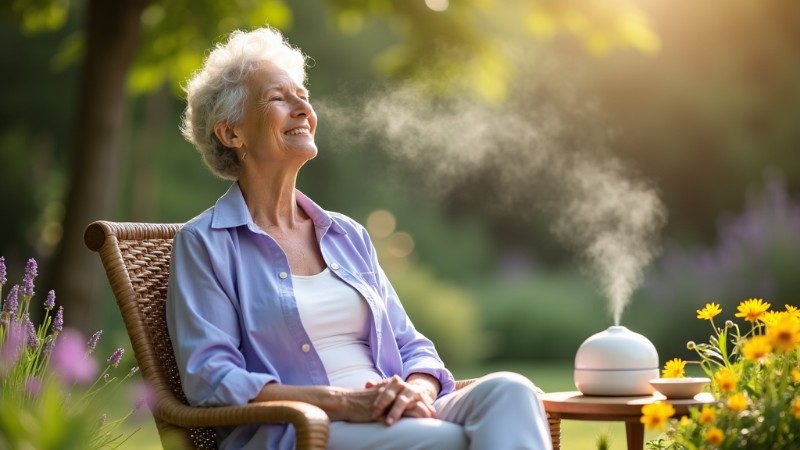National Geographic and the National Institute on Aging have identified five regions around the world where large communities of people live to be over 100 years old.
These areas, known as the Blue Zone, include California in the U.S., Nicoya in Costa Rica, Sardinia in Italy, Ikaria in Greece, and Okinawa in Japan. People in these regions not only have longer lifespans but also maintain better overall health, experiencing fewer chronic illnesses such as diabetes, cancer, and heart disease.
A significant factor contributing to their longevity is their daily dietary habits, which share several common characteristics despite cultural, environmental, and lifestyle differences.
One of the most prominent features of these eating plans is a reliance on locally sourced foods. Similarly, their meals primarily consist of plant-based ingredients, including seeds and nuts, along with moderate amounts of seafood, limited dairy, and minimal red meat.
Key Takeaways
People in the Blue Zones enjoy longer, healthier lives thanks to specific eating habits and wellness routines.
- Blue Zone residents eat a primarily plant-based diet with little red meat, emphasizing foods grown locally.
- Alternative therapies such as acupuncture, massage, and aromatherapy are used alongside a healthy diet to reduce stress and relieve pain.
- Low-impact exercises like Pilates, Qi Gong, and dancing, combined with meditation, boost both physical and mental well-being.
Guidelines for the Blue Zone diet
The Blue Zone diet offers specific guidelines designed to help individuals adopt healthier eating habits and integrate them into their daily lives.
These recommendations include limiting daily sugar intake to 28 grams, restricting weekly egg consumption to three eggs, and keeping red meat intake to no more than two ounces, up to five times per month. Additionally, the eating plan advises reducing dairy consumption.
Another key component is the inclusion of certain beverages, such as moderate amounts of wine—one to two small glasses per day—as well as coffee or tea as part of a regular routine.
The eating approach also promotes the use of healthy oils, particularly olive oil, along with spices known for their potential health benefits, such as turmeric.
These guidelines serve as a practical roadmap for those looking to embrace a Blue Zone-style diet to support better health and longevity.
The Blue Zone diet for seniors and older adults
While it is important to tailor dietary habits to individual preferences and needs, the principles of the Blue Zone diet provide valuable guidance for adopting healthier eating patterns over time.
A crucial aspect of this method is incorporating naturally fermented products without added sugar. These foods are widely recognized for their probiotic benefits, which support gut health and contribute to overall well-being.
For older individuals seeking to enhance their health and longevity, embracing these dietary practices can be a meaningful step toward maintaining vitality and reducing the risks associated with chronic diseases.
Alternative therapies for seniors
Complementing the Blue Zone approach are various alternative therapies that support health and wellness in later years.
Practices such as acupuncture, massage therapy, and aromatherapy enhance the effects of nutritious eating habits by promoting relaxation and reducing stress.
Regular acupuncture sessions help alleviate pain and improve circulation, providing significant benefits for older individuals. Similarly, gentle massages ease muscle tension and stiffness, which are common concerns as people age.
Aromatherapy with essential oils like lavender supports restful sleep and improves emotional balance.
By integrating these alternative therapies with a nourishing lifestyle, individuals can adopt a holistic health approach that nurtures physical and mental vitality.
Gentle exercises and meditation for seniors
Incorporating gentle exercise routines such as Pilates or Gyrokinesis helps older individuals maintain flexibility and strength without placing excessive strain on their joints. These exercises are specifically designed to accommodate the needs of aging bodies and can be adjusted based on individual capabilities.
Qi Gong is another beneficial practice that integrates slow, controlled movements with deep breathing, offering both physical exercise and mental relaxation.
Dancing supports cardiovascular health while fostering social connections, which play a crucial role in emotional well-being later in life.
Meanwhile, meditation practices, including mindfulness and transcendental meditation, help lower stress levels and enhance cognitive function.
Together, these holistic treatments complement the nutritional benefits of a Blue Zone diet by addressing multiple aspects of overall strength and longevity.
Conclusion
By combining nutritious eating habits with comprehensive wellness practices, older individuals can enhance their quality of life and sustain their health over time.
A plant-focused diet, coupled with regular physical activity, plays a vital role in maintaining overall well-being. Complementary therapies further support these efforts by addressing age-related concerns such as pain management, improved circulation, and stress reduction.
As the global population ages, adopting these strategies becomes increasingly essential for promoting long-term vitality and longevity.
For those interested in a Blue Zone-inspired lifestyle, consulting healthcare professionals helps ensure that dietary choices and wellness routines align with personal health needs. Tailoring these practices allows individuals to gain the full benefits of nutrition and supportive therapies.
Integrating wholesome eating with mindful health practices offers a well-rounded approach to aging. By focusing on nourishing foods and incorporating beneficial therapies, individuals can enhance not only their physical health but also their mental and emotional well-being.


